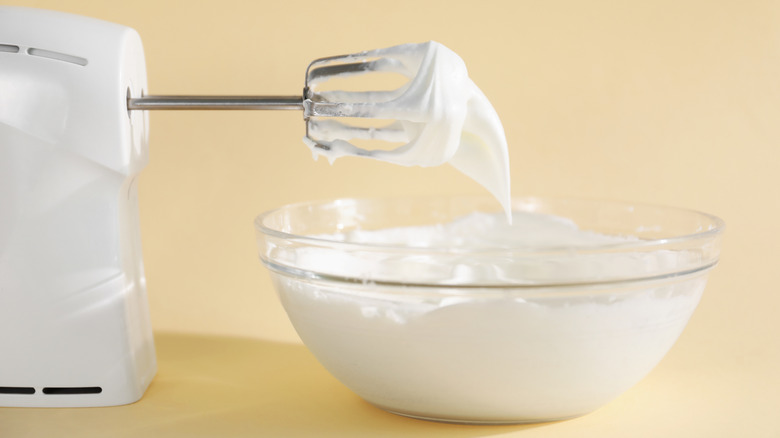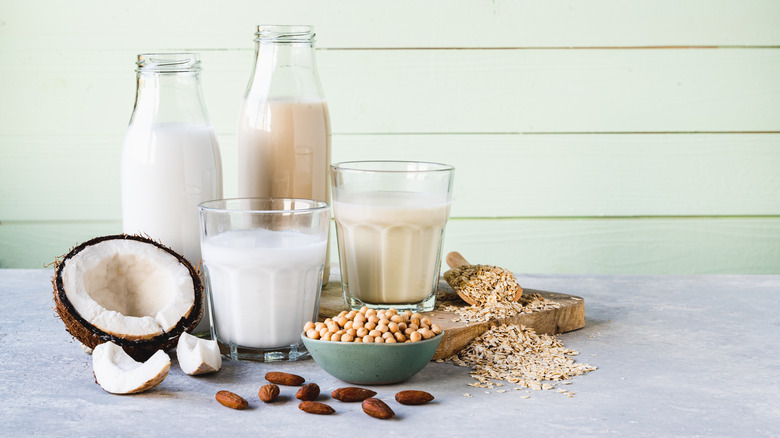Why It's So Hard To Make Whipped Cream With Non-Dairy Milk (And How To Fix It)
Whether it's an allergy or a preference, dairy-free milk drinkers all want the same thing: a non-dairy whipped cream that's just as luscious and tasty as the one made with dairy. There are a few things to keep in mind when swapping dairy with plant-based dairy alternatives. Most non-dairy whipped cream recipes rely on full-fat canned coconut cream, since its high fat content gives it a thick and creamy texture, while also helping it hold onto air when whipped. However, chances are if you've attempted to make one of these recipes, you've experienced a few challenges — from deflated coconut cream to the flavor being a little too coconutty for your liking. According to two-time James Beard Award nominated vegan chef, Shenarri Freeman, temperature can actually make or break your non-dairy whipped cream — literally!
Freeman exclusively told The Takeout, "The hardest part is temperature control. Sometimes when things get too hot, they may fall flat. A lot of people see that with coconut cream; if the temperature's not right, it'll just become coconut milk." She added, "So you want to make sure your temperatures are right when you're dealing with these products and get them into your recipe right away." With that in mind, it's best to chill everything involved in the process in advance until ready to use — keep the canned coconut cream in the fridge, and the mixing bowl and mixing whisks in the freezer, as this will help to create nice stiff peaks in the whipped cream. From here, gradually adding powdered sugar also promotes stability since it's comprised of cornstarch, while the sugar also adds sweetness.
How to whip it good with (almost) any non-diary milk
When coconut cream is cold, the coconut flavor becomes less pronounced, and even more so once air is incorporated and powdered sugar is added. Adding a few drops of real vanilla extract or vanilla bean paste (it's expensive, but worth it) is optional but highly recommended to help further enhance flavors. You could also build upon this base and mix cinnamon throughout, or a few tablespoons of cocoa powder for a chocolate non-dairy whipped cream. But if you don't prefer coconut, your non-dairy whipped cream dreams can still come true by using a different non-dairy milk instead.
Soy milk and full-fat oat milkare a few non-dairy milks that have a more neutral taste compared to canned coconut milk and also naturally taste sweeter. While they don't have as much fat as canned coconut milk, their moderate fat content still provides creaminess and the ability to aerate. They definitely require some extra help though from stabilizers stronger than powdered sugar and most recipes will also add oil to increase the fat content to create more stability. Cream of tartar, tapioca starch, guar gum, and xanthan gum are all plant-based stabilizers that can be used in conjunction with powdered sugar and are available in the baking aisle of any grocery store or online. When making a non-dairy whipped cream recipe using non-dairy milk, temperature control still matters, so keep things cool!

